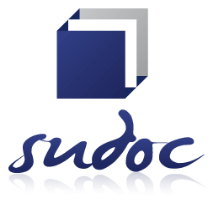Aspectos éticos de la telemedicina ante la pandemia de Covid-19
DOI:
https://doi.org/10.36105/mye.2021v32n1.07Palabras clave:
telemedicina, SARS-CoV-2, asociación médica mundialResumen
El artículo plantea condiciones clínico-epidemiológicas peculiares cuando la humanidad se enfrente a una zoonosis emergente. El ejemplo que groseramente ha golpeado a la humanidad es la pandemia de Covid-19, enfermedad causada por el coronavirus SARS-CoV-2. Si bien la historia de la humanidad da cuenta de múltiples pandemias ocasionadas por varios agentes infectocontagiosos, es cierto que en el primer momento de afrontar una problemática global de esta naturaleza lo que prima es la incertidumbre. Ante ella, existe la obligación moral de proveer los mejores servicios de salud que sea posible; a la par, debe realizarse una investigación para encontrar medidas farmacéuticas específicas que contengan y mitiguen el daño poblacional (medicamentos específicos y/o vacunas). Mientras tanto, sabiendo que en el caso de la actual pandemia de Covid-19 la principal y más eficiente vía de transmisión es la propagación por gotas de saliva, el distanciamiento físico es crucial. Una consulta médica involucra hablar en el interrogatorio y una proximidad física durante la exploración. Existen datos que indican que la telemedicina tiene un alto grado de recomendación para la protección de la salud, tanto de profesionales como de pacientes. Se recuerda que una declaración de la Asociación Médica Mundial ha tratado el tema de la telemedicina; con su exposición, se indican alcances, limitaciones y proyecciones en el futuro.
Descargas
Referencias
Spyrou MA, Andrades Valtueña A, Huson D, Tuross N, Bos KI, Krause J. Salmonella
enterica genomes from victims of a major sixteenth-century epidemic in Mexico.
Nat Ecol Evol. 2018; 2(3): 520-528. https://doi.org/10.1038/s41559-017-0446-6.
2. Koh D. Occupational risks for Covid-19 infection. Occup Med (Lond). 2020; 70(1):
3-5. https://doi.org/10.1093/occmed/kqaa036.
3. Wang J, Zhou M, Liu F. Reasons for healthcare workers becoming infected with
novel coronavirus disease 2019 (Covid-19) in China. J Hosp Infect. 2020; 105(1):
100-101. https://doi.org/10.1016/j.jhin.2020.03.002.
4. Chen W, Huang Y. To protect healthcare workers better, to save more lives.
Anesth Analg. 2020; 131(1): 97-101. https://doi.org/10.1213/ANE.000000000000
4834.
5. Rockwell KL, Gilroy AS. Incorporating telemedicine as part of Covid-19 outbreak
response systems. Am J Manag Care. 2020; 26(4): 147-148. https://doi.org/
10.37765/ajmc.2020.42784.
6. Moazzami B, Razavi-Khorasani N, Dooghaie Moghadam A, Farokhi E, Rezaei
N. Covid-19 and telemedicine: Immediate action required for maintaining healthcare
providers well-being. J Clin Virol. 2020; 126: 104345. https://doi.org/10.1016/
j.jcv.2020.104345.
7. Hollander JE, Carr BG. Virtually perfect? Telemedicine for Covid-19. N Engl J
Med. 2020; 382(18): 1679-1681. https://doi.org/10.1056/NEJMp2003539.
8. Greenhalgh T, Wherton J, Shaw S, Morrison C. Video consultations for Covid-
19. BMJ. 2020 Mar 12; 368: m998. https://doi.org/10.1136/bmj.m998.
9. Rismiller K, Cartron AM, Trinidad JCL. Inpatient teledermatology during the Covid-
19 pandemic. J Dermatolog Treat. 2020; 31(5): 441-443.
https://doi.org/10.1080/09546634.2020.1762843
10. Sousa A, Karia S. Telepsychiatry during Covid-19: Some clinical, public health,
and ethical dilemmas. Indian J Public Health. 2020; 64(Supplement): S245-S246.
https://doi.org/10.4103/ijph.IJPH_511_20
11. Olwill C, Mc Nally D, Douglas L. Psychiatrist experience of remote consultations
by telephone in an outpatient psychiatric department during the Covid-19
pandemic. Ir J Psychol Med. 2020 May 22; 1-8. https://doi.org/10.1017/ipm.2020.51
12. Basu S. Non-communicable disease management in vulnerable patients during
Covid-19. Indian J Med Ethics. 2020; V(2): 103-105.
https://doi.org/10.20529/IJME.2020.041
13. Fagherazzi G, Goetzinger C, Rashid MA, Aguayo GA, Huiart L. Digital health
strategies to fight Covid-19 worldwide: Challenges, recommendations, and a call
for papers. J Med Internet Res. 2020 Jun 16; 22(6): e19284.
https://doi.org/10.2196/19284
14. Vokinger KN, Nittas V, Witt CM, Fabrikant SI, von Wyl V. Digital health and the
Covid-19 epidemic: An assessment framework for apps from an epidemiological
and legal perspective. Swiss Med Wkly. 2020 May 17; 150: w20282.
https://doi.org/10.4414/smw.2020.20282.
15. Garrett JR, McNolty LA, Wolfe ID, Lantos JD. Our next pandemic ethics challenge?
Allocating «normal» health care services. Hastings Cent Rep. 2020; 50(3):
79-80. https://doi.org/10.1002/hast.1145. PMID: 32596905.
16. WHO (World Health Organization). Telemedicine. Opportunities and developments
in member states. Report on the second global survey on eHealth. Global
Observatory for eHealth series. Volume 2. [Consultado el 10 de octubre de 2020].
Recuperado en: http://www.who.int/goe/publications/goe_telemedicine_2010.pdf
https://doi.org/10.4258/hir.2012.18.2.153
17. OPS (Organización Panamericana de la Salud). Telesalud. [Consultado el 10
de octubre de 2020]. Recuperado en: https://www.paho.org/ict4health/index.php?
option=com_content&view=article&id=9684:telehealth&Itemid=193&lang=es
18. Coordinación Nacional Médica del INSABI. Entrenamiento continuo sobre manejo
clínico para profesionales de la salud. [Consultado el 10 de octubre de
2020]. Recuperado en: https://coviduti.salud.gob.mx/registro/ https://doi.org/
10.29193/rmu.36.2.2
19. Dos Santos AF, Fernández A, (Eds.). Desarrollo de la telesalud en América
Latina. Aspectos conceptuales y estado actual. Santiago de Chile: Comisión Económica
para América Latina y el Caribe (CEPAL); 2013. [Consultado el 10 de octubre
de 2020]. Recuperado en: http://www.saludzac.gob.mx/home/docs/Telesalud/
TelesaludMexico/Desarrollo.pdf https://doi.org/10.20983/reij.2018.2.6
20. González Rétiz ML, Pacheco López A. Desarrollo de la telesalud en México.
Santiago de Chile: Comisión Económica para América Latina y el Caribe (CEPAL);
2013. [Consultado el 10 de octubre de 2020]. Recuperado en: https://
repositorio.ce pal.org/bitstream/handle/11362/4055/1/S2012935_es.pdf
https://doi.org/10.20983/reij.2018.2.6
21. Secretaría de Salud, CENETEC-Salud. Cédula de Instrumentos Jurídicos aplicables
a la práctica de la telesalud en México. 2ª ed. México: Secretaría de Salud,
Centro Nacional de Excelencia Tecnológica en Salud; 2019. [Consultado el 10 de
octubre de 2020]. Recuperado en: https://www.gob.mx/cms/uploads/attachment/
file/534418/CedulaInstrumentosJuridicosTelesalud_feb2020.pdf
https://doi.org/10.1590/s0036-36342000000300012
22. Dabaghi Richerand A, Chávarri A, Torres Gómez A. Telemedicina en México.
An Med (Mex). 2012; 57(4): 353-357.
23. Mariscal Avilés J, Gil García JR, Ramírez Hernández F. e-Salud en México:
antecedentes, objetivos, logros y retos. Espacios Públicos. 2012; 15(34): 65-94.
24. Hodkinson B, Singh P, Gcelu A, Molano WB, Pons Estel G, Alpízar Rodríguez
D. Navigating Covid-19 in the developing world. Clin Rheumatol. 2020; 39(7):
2039-2042. https://doi.org/10.1007/s10067-020-05159-4.
25. El gobierno de la CdMx se preocupa por tu salud. [Consultado el 10 de octubre
de 2020]. Recuperado en: https://test.covid19.cdmx.gob.mx
26. Declaración de la Asociación Médica Mundial sobre la ética de la telemedicina.
[Consultado el 10 de octubre de 2020]. Recuperado en: https://www.wma.net/
es/policies-post/declaracion-de-la-amm-sobre-la-etica-de-la-telemedicina/
https://doi.org/10.3989/isegoria.1994.i10.269
27. Humbyrd CJ. Virtue ethics in a value-driven world: Ethical telemedicine. Clin
Orthop Relat Res. 2019; 477(12): 2639-2641.
https://doi.org/10.1097/CORR.0000000000000908
Descargas
Publicado
Número
Sección
Licencia
Derechos de autor 2021 Jorge Alberto Álvarez Díaz

Esta obra está bajo una licencia internacional Creative Commons Atribución-NoComercial-CompartirIgual 4.0.
Medicina y Ética se distribuye bajo Licencia Creative Commons Atribución-NoComercial-CompartirIgual 4.0 Internacional.
El autor conserva los derechos patrimoniales sin restricciones y garantiza a la revista el derecho de ser la primera publicación del trabajo. El autor es libre de depositar la versión publicada en cualquier otro medio, como un repositorio institucional o en su propio sitio web.



























